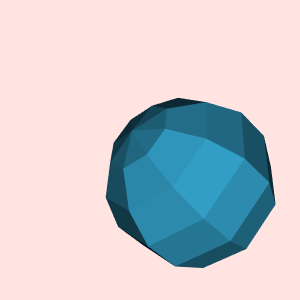DataAnimationSubclass
vtk-examples/Cxx/Utilities/DataAnimationSubclass
Question
If you have a question about this example, please use the VTK Discourse Forum
Code¶
DataAnimationSubclass.cxx
#include <vtkActor.h>
#include <vtkCamera.h>
#include <vtkCommand.h>
#include <vtkNamedColors.h>
#include <vtkNew.h>
#include <vtkPolyDataMapper.h>
#include <vtkProgrammableFilter.h>
#include <vtkProperty.h>
#include <vtkRenderWindow.h>
#include <vtkRenderWindowInteractor.h>
#include <vtkRenderer.h>
#include <vtkSphereSource.h>
#include <iostream>
#include <string>
namespace {
unsigned int counter = 0;
class CommandSubclass : public vtkCommand
{
public:
vtkTypeMacro(CommandSubclass, vtkCommand);
static CommandSubclass* New()
{
return new CommandSubclass;
}
void Execute(vtkObject* caller, unsigned long vtkNotUsed(eventId),
void* vtkNotUsed(callData)) override
{
std::cout << "Timer callback" << std::endl;
vtkRenderWindowInteractor* iren =
static_cast<vtkRenderWindowInteractor*>(caller);
this->ProgrammableFilter->Modified();
iren->Render();
if (counter > maxCount)
{
iren->DestroyTimer();
}
}
vtkSmartPointer<vtkProgrammableFilter> ProgrammableFilter;
public:
unsigned int maxCount = 7;
};
void AdjustPoints(void* arguments);
} // namespace
int main(int, char*[])
{
vtkNew<vtkNamedColors> colors;
// Create a sphere.
vtkNew<vtkSphereSource> sphereSource;
sphereSource->Update();
vtkNew<vtkProgrammableFilter> programmableFilter;
programmableFilter->SetInputConnection(sphereSource->GetOutputPort());
programmableFilter->SetExecuteMethod(AdjustPoints, programmableFilter);
// Create a mapper and actor.
vtkNew<vtkPolyDataMapper> mapper;
mapper->SetInputConnection(programmableFilter->GetOutputPort());
vtkNew<vtkActor> actor;
actor->SetMapper(mapper);
actor->GetProperty()->SetColor(colors->GetColor3d("Peacock").GetData());
// Create a renderer, render window, and interactor.
vtkNew<vtkRenderer> renderer;
vtkNew<vtkRenderWindow> renderWindow;
renderWindow->AddRenderer(renderer);
renderWindow->SetWindowName("DataAnimationWSubclass");
vtkNew<vtkRenderWindowInteractor> renderWindowInteractor;
renderWindowInteractor->SetRenderWindow(renderWindow);
// Initialize must be called prior to creating timer events.
renderWindowInteractor->Initialize();
renderWindowInteractor->CreateRepeatingTimer(500);
vtkNew<CommandSubclass> timerCallback;
timerCallback->ProgrammableFilter = programmableFilter;
renderWindowInteractor->AddObserver(vtkCommand::TimerEvent, timerCallback);
// Add the actor to the scene.
renderer->AddActor(actor);
renderer->SetBackground(colors->GetColor3d("MistyRose").GetData());
// Render and interact.
renderWindow->Render();
auto camera = renderer->GetActiveCamera();
camera->SetPosition(2.26841, -1.51874, 1.805);
camera->SetFocalPoint(-0.148582, 0.0814323, 0.24803);
camera->SetViewUp(0.157813, 0.800687, 0.577923);
camera->SetDistance(3.29037);
camera->SetClippingRange(1.14823, 5.60288);
renderWindowInteractor->Start();
return EXIT_SUCCESS;
}
namespace {
void AdjustPoints(void* arguments)
{
std::cout << "AdjustPoints" << std::endl;
auto programmableFilter = static_cast<vtkProgrammableFilter*>(arguments);
vtkPoints* inPts = programmableFilter->GetPolyDataInput()->GetPoints();
vtkIdType numPts = inPts->GetNumberOfPoints();
vtkNew<vtkPoints> newPts;
newPts->SetNumberOfPoints(numPts);
for (vtkIdType i = 0; i < numPts; i++)
{
double p[3];
inPts->GetPoint(i, p);
newPts->SetPoint(i, p);
}
double p0[3];
inPts->GetPoint(0, p0);
p0[2] = p0[2] + counter * 0.1;
newPts->SetPoint(0, p0);
programmableFilter->GetPolyDataOutput()->CopyStructure(
programmableFilter->GetPolyDataInput());
programmableFilter->GetPolyDataOutput()->SetPoints(newPts);
counter++;
}
} // namespace
CMakeLists.txt¶
cmake_minimum_required(VERSION 3.12 FATAL_ERROR)
project(DataAnimationSubclass)
find_package(VTK COMPONENTS
CommonColor
CommonCore
FiltersProgrammable
FiltersSources
InteractionStyle
RenderingContextOpenGL2
RenderingCore
RenderingFreeType
RenderingGL2PSOpenGL2
RenderingOpenGL2
)
if (NOT VTK_FOUND)
message(FATAL_ERROR "DataAnimationSubclass: Unable to find the VTK build folder.")
endif()
# Prevent a "command line is too long" failure in Windows.
set(CMAKE_NINJA_FORCE_RESPONSE_FILE "ON" CACHE BOOL "Force Ninja to use response files.")
add_executable(DataAnimationSubclass MACOSX_BUNDLE DataAnimationSubclass.cxx )
target_link_libraries(DataAnimationSubclass PRIVATE ${VTK_LIBRARIES}
)
# vtk_module_autoinit is needed
vtk_module_autoinit(
TARGETS DataAnimationSubclass
MODULES ${VTK_LIBRARIES}
)
Download and Build DataAnimationSubclass¶
Click here to download DataAnimationSubclass and its CMakeLists.txt file. Once the tarball DataAnimationSubclass.tar has been downloaded and extracted,
cd DataAnimationSubclass/build
If VTK is installed:
cmake ..
If VTK is not installed but compiled on your system, you will need to specify the path to your VTK build:
cmake -DVTK_DIR:PATH=/home/me/vtk_build ..
Build the project:
make
and run it:
./DataAnimationSubclass
WINDOWS USERS
Be sure to add the VTK bin directory to your path. This will resolve the VTK dll's at run time.
